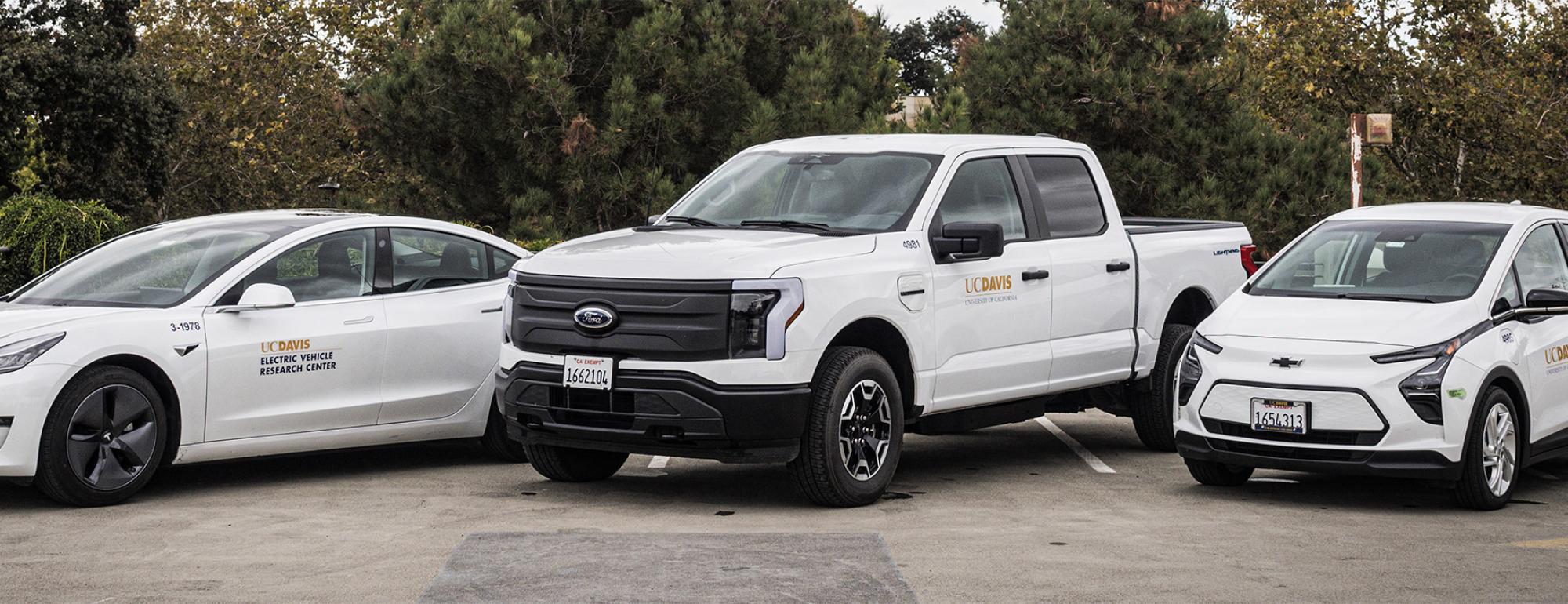Main Goals for EV Efficiency Improvement
- Reduce Electricity Demand: Focus on managing the surge in power consumption from EVs.
- Minimize Critical Mineral Usage: Address the geopolitical challenges of sourcing battery materials.
- Alleviate Grid Stress: Enhance grid capacity to support an increasing number of electric vehicles.


Our Approach
We collaborate with:
- State and federal agencies
- Utilities
- Automakers
- Charging companies
- Policymakers
Holistic Approach
The initiative targets efficiency improvements across all use phases.

Driving
(dynamic efficiency)

Stationary
(off-test driving efficiency)

Charging
(both on and off board efficiency)
This initiative also considers the tradeoffs between efficiency and:
- Range
- Vehicle Size/Segment
- Cost/Price
- Design Attributes
Key Challenges of Electric Transportation
Missed Policy Opportunities
Lack of efficiency standards

Electricity Demand
Increased EV sales raise power consumption, straining electrical grids.
Critical Minerals
Larger batteries create geopolitical concerns over mineral supply chains.
Consumer Tradeoff
Buyers prioritize range and size, which may compromise vehicle efficiency.
Examples of Efficiency Opportunities
Driving Efficiency
- Vehicle range and energy use per mile significantly impact overall performance.
- Current standards do not capture off-cycle consumption.
Off-Test Driving Efficiency
- Includes battery cooling, cabin temperature control, and standby power.
- Represents a major untapped area for efficiency gains.
Charging Efficiency
- Charging processes vary in effectiveness based on equipment, conditions, and methods (AC, DC, V2G).
The Four Pillars of Research

Estimating Potential Benefits
The first pillar involves estimating the potential benefits of EV efficiency based on current knowledge and demonstrating these benefits within the context of California's electrical grid and EV market.

Data Collection and Standards
The second pillar focuses on exploring existing data collection methods and proposing new tools and standards to better capture both on-cycle and off-cycle efficiencies. This includes efficiencies related to vehicle range as well as those independent of range.

Consumer Acceptance and market analysis
The third pillar examines consumer acceptance of higher efficiency, particularly in relation to vehicle size, performance, and range preferences.

Policy Development
The fourth pillar investigates policy mechanisms to materialize EV efficiency, exploring potential approaches such as incentives, regulations, and standards.

Pillar 1: Estimating Potential Benefits
- Forecast Future EV Demand and Fleet Composition: Factors such as the increasing prevalence of multi-EV households, the rise of EV-only households, the market dynamics between new and used EVs, and shifts in consumer preferences for vehicle range and size based on evolving battery technologies and costs will all be considered. This model will be the first to include the potential rebound effect of efficiency exploring the interaction with EV range and vehicle size.
- Explore Emerging Technologies for Charging: While the broader study will examine the potential from charger to wheel, this initiative will be used specifically to examine technologies that could enhance EV charger efficiency.
- Grid and Infrastructure: Scenarios will be generated to test the impact of proposed policies on charging infrastructure, the electricity distribution network, and total demand for electricity for the California grid. This includes evaluating the impact of higher efficiency on managed charging and charging flexibility, as well as the potential impact on distributed energy resources (DER).

Pillar 2: Data Collection and Standards
Exploring availability of data across EV use phases. Focus on lifecycle energy efficiency and usage.
While Driving
- Dynamic components: Towing, extreme weather, battery preconditioning.
- Out-of-cycle demands: Cabin heating, onboard computer energy.
While Parking
Energy from "off-cycle" demands: Vampire loads, AI processes, battery/cabin conditioning, "dog mode." Stationary activities contribute to total energy use.
While Charging
- Onboard charging efficiency: Varies by power rate and system conditions.
- Charging equipment efficiency: External infrastructure performance impacts energy demand.
Combined Impact
Energy demands across driving, parking, and charging phases. Highlights need for comprehensive energy efficiency strategies.

Pillar 3: Consumer Acceptance and market analysis
EV buyers’ willingness to pay for efficiency and lower operating costs, compared to gas cars, is key to EV adoption. However, preferences regarding tradeoffs—such as size vs. efficiency, range vs. efficiency, or charging speed vs. efficiency—are still understudied.
1. Literature Review:
Conduct a thorough review of existing research on consumer preferences for EV efficiency, vehicle range, and associated tradeoffs.
2. Analysis of Existing Survey Data:
Leverage available survey datasets to model consumer preferences for EV range efficiency, vehicle size, and charging characteristics.
3. New Data Collection:
Target across different markets to explore attitudes toward EV efficiency, tradeoffs, and emerging technologies such as V2G capabilities: Interviews, Focus Groups, Surveys

Pillar 4: Policy Development
Evaluate Existing Policies
Explore current federal and state regulations (e.g., CAFE standards, appliance efficiency rules) for relevance to EV efficiency. Identify gaps and limitations in addressing unique EV energy challenges.
Propose Updates to Regulations
Suggest tailored standards for EV-specific factors such as off-cycle energy use, charging efficiency, and impacts of size and range on energy performance. Examine opportunities to align standards with technological advancements and market trends.
Study New Policy Tools
Investigate mechanisms like feebates to incentivize efficiency in EV design and production. Explore consumer incentives to encourage adoption of more efficient EV models.
Objective
Develop a comprehensive policy framework to support innovation, improve EV energy efficiency, and reduce emissions.
Budget and Timeline
Launch Date and Initial Funding
Scheduled for a March 2025 launch with a target amount of $350,000 in seed funding for year one.
March 21, 2025 – 1-hour Project Kickoff Webinar [Tentative 9am]
July 16, 2025 – XAM Session X, Research Project Update @ ITS Asilomar Conference
December TBD, 2025 -- Initiative Findings Workshop @ EEI Board of Advisors Meeting
Key Preliminary Studies
- Comprehensive review of data on potential savings across all EV use phases (Pillar 2).
- Modeling and demonstrating the impact of improved EV efficiency on California's energy sector.
- Review of consumer acceptance of efficiency improvements (e.g., size, range, operational costs).
Future Funding and Expansion
- Seek California Energy Commission (CEC) support in early 2025 to expand data efforts and integrate findings into CEC programs.
- Secure additional funds for market and policy studies full budget estimated at 3 millions for 4 years.
Key Researchers of the Electric Vehicle Efficiency Initiative

Dr. Gil Tal is an expert in electric vehicle technologies, focusing on efficiency improvements and sustainable practices in EV development. He leads research projects that aim to advance the understanding of EV lifecycle impacts.

Roland Hwang specializes in transportation policy and its implications for electric vehicle adoption. He works collaboratively with policymakers to develop strategies that enhance EV efficiency and promote cleaner transportation.

Dr. Alan Jenn conducts research on the integration of electric vehicles into existing transportation systems. His work includes modeling and simulation to evaluate the efficiency of EVs in various scenarios.

Dr. Alissa Kendall focuses on the environmental impacts of electric vehicles, analyzing their sustainability throughout the entire lifecycle from production to end-of-life. Her research supports the initiative's goal of reducing the carbon footprint of EVs.

Dr. Dan Sperling is the founding director of the Institute of Transportation Studies at UC Davis. He is a recognized leader in transportation research and advocates for innovative policies that support the transition to electric vehicles.

Dr. Alan Meier is an Adjunct Professor at UC Davis in the Department of Environmental Science and Policy, and a faculty researcher at the UC Davis Energy and Efficiency Institute. His research focuses on understanding how people and equipment use energy and opportunities to reduce consumption.
Sponsors


